How to Fix reCAPTCHA Not Working in Chrome, Firefox, and Other Browsers
Filestack has implemented a Google tool called reCAPTCHA to prevent bots from accessing websites meant for human users. The tool helps to differentiate between genuine users and bots. Despite its utility, reCAPTCHA can sometimes be buggy, leading to difficulty accessing websites in browsers like Chrome, Mozilla Firefox, and others. If you’re experiencing this issue, this article will offer solutions.
The reCAPTCHA test requires users to check a box labeled “I’m not a robot” to confirm their humanity. When the test fails despite entering the correct captcha code, access to the website is denied, causing frustration. But don’t worry; there are ways to fix this error. To better understand the problem, let’s look at the causes.
Why is reCAPTCHA Not Working in Chrome or Firefox?
reCAPTCHA may not function properly on your web browser for various reasons, such as network issues like poor connectivity or interference from a VPN. Other factors, like an outdated browser, a suspicious IP address, a corrupted browser profile, or malware, may also contribute to the problem. But don’t worry; let’s walk through the steps to fix the issue together.
10 Solutions to the reCAPTCHA Not Working Issue
Here are ten possible solutions for reCAPTCHA not functioning correctly in Chrome and other widely-used browsers. We’ll begin by suggesting updating your web browser.
1. Keep Your Chrome or Firefox Browser Up-to-Date
Suppose many users are encountering issues with reCAPTCHA not functioning correctly. In that case, it may be due to a problem with the current web browser version or because it is outdated. To ensure optimal performance, it is important always to use the latest version of your browser. Here’s how to update an outdated version of Chrome. The process is similar for Firefox and other browsers as well. 1. Open Chrome, click the three dots icon in the toolbar, and select Help.
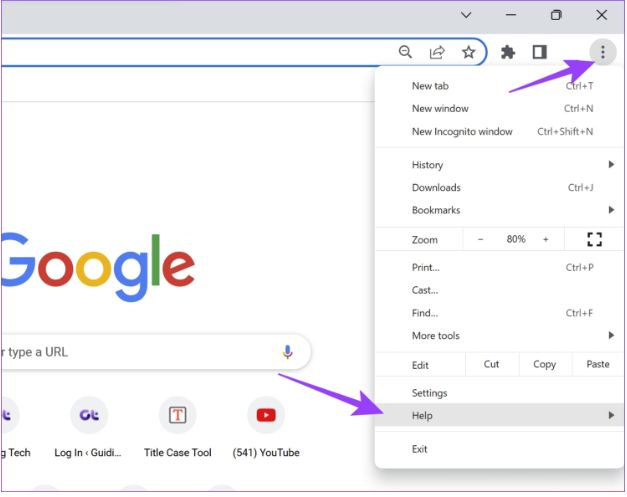 2. Now, select the About Google Chrome option.
2. Now, select the About Google Chrome option.
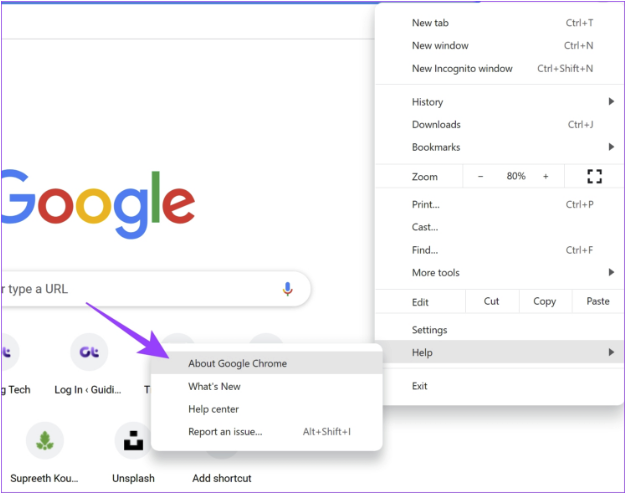 3. In the window below, you will see the status regarding the version of Google Chrome. If it is not updated to the latest version, you will get an option to do the same.
3. In the window below, you will see the status regarding the version of Google Chrome. If it is not updated to the latest version, you will get an option to do the same.
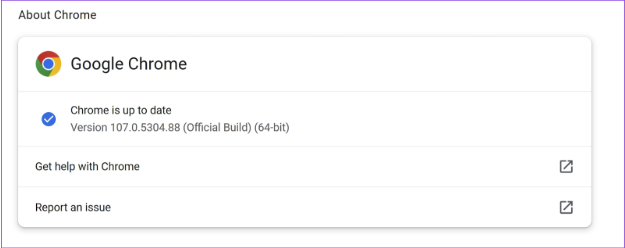
2. Enable JavaScript
Websites and internet services use JavaScript to display and embed interactive content. As mentioned earlier, reCAPTCHA involves you checking a box called ‘I’m not a robot,’ which uses JavaScript. Hence, you must ensure that it is enabled on your browser.
Enable JavaScript on Chrome 1. Open Chrome, click the three dots icon on the toolbar, and select Settings.
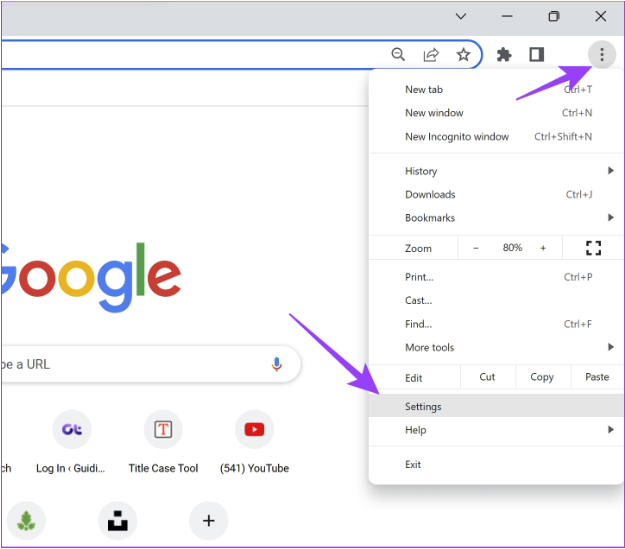 2. Select the Privacy and security option on the left pane and open Site settings.
2. Select the Privacy and security option on the left pane and open Site settings.
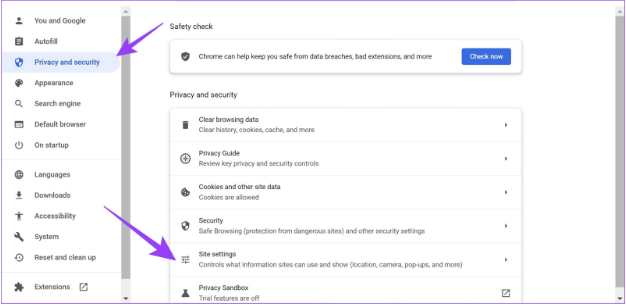 3. Next, scroll down and click on the JavaScript option.
3. Next, scroll down and click on the JavaScript option.
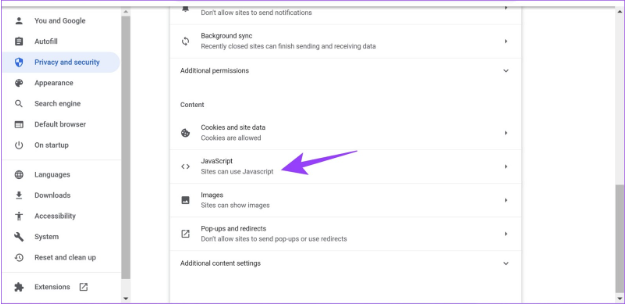 4. To enable JavaScript, ensure to select the option Sites can use Javascript to enable JavaScript. Also, ensure there are no exceptions added to the Customized Behaviors list.
4. To enable JavaScript, ensure to select the option Sites can use Javascript to enable JavaScript. Also, ensure there are no exceptions added to the Customized Behaviors list.
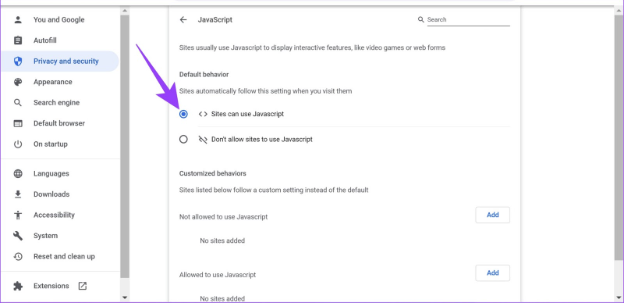
Enable JavaScript on Firefox The procedure is slightly different on Firefox, and here’s how you can check for JavaScript. 1. First, open FireFox and type about:config in the URL bar and hit enter. 2. Select the Accept the Risk and Continue option.
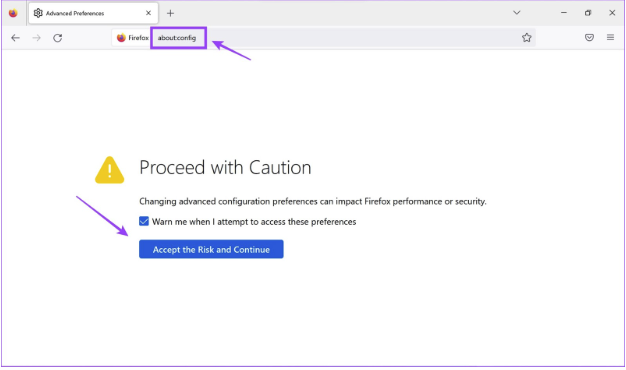 3. Search for JavaScript, and check the status - whether it is true or false.
4. If false, tap on the toggle status button to make it true, enabling JavaScript.
3. Search for JavaScript, and check the status - whether it is true or false.
4. If false, tap on the toggle status button to make it true, enabling JavaScript.

If this does not fix the issue, try disabling extensions.
3. Disable Extensions
Extensions and browser add-ons might add some extra functionality to your browser, but they cause a few issues too. Therefore, you can disable extensions to check if reCAPTCHA starts working again on your browser.
Disable Extensions in Chrome
- Open Chrome, click the extension’s icon on the toolbar, and select Manage Extensions.
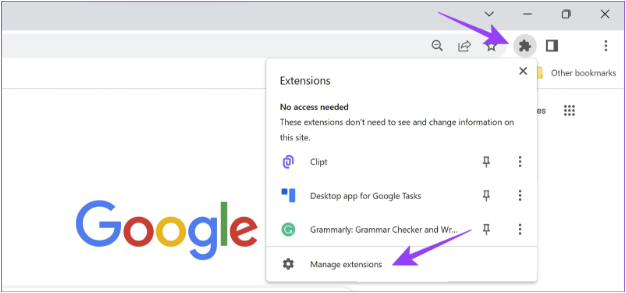
- You will now see a list of installed extensions. Turn off the toggle to disable an extension and check if it solves the issue. Repeat this for all the installed extensions.
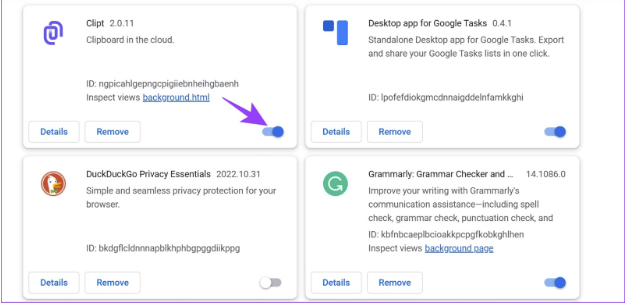
Disable Extensions in Firefox If you use Firefox, it does not have a dedicated extensions button on the toolbar. Hence, you need to follow the steps below to manage extensions.
1. Click on the hamburger-shaped menu on the toolbar. 2. Select Add-ons and Themes. 3. You can disable and remove extensions in the open window.
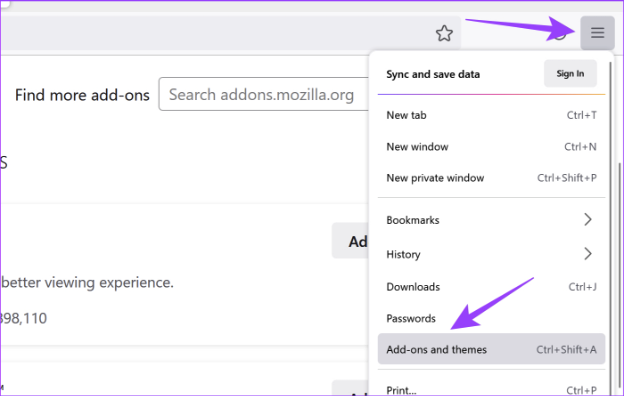
If this does not fix the issue, you can move on to the next method, which is using a new user profile.
4. Create a New Browser Profile
Web browsers can create and use a profile for different users with specific configurations on the same browser. However, there might be a configuration on the profile that you are using that is causing the issue of reCAPTCHA not working. Therefore, you can try using a different user profile to fix the problem. 1. Open Chrome and click on the profile picture icon on the toolbar. 2. You will see a list of profiles on Chrome. Select another profile to change, or click Add to create a new user profile.
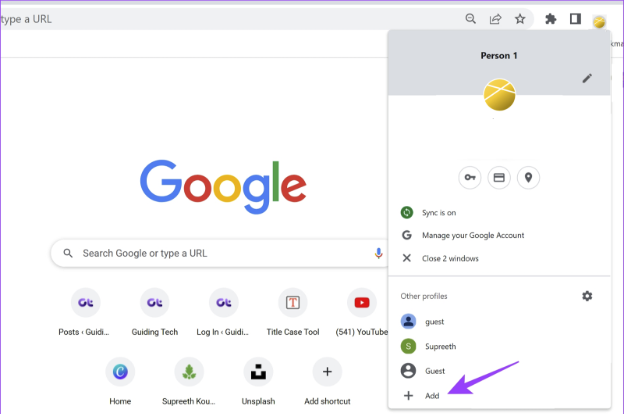
3. Follow the onscreen instructions to create a new profile on Chrome.
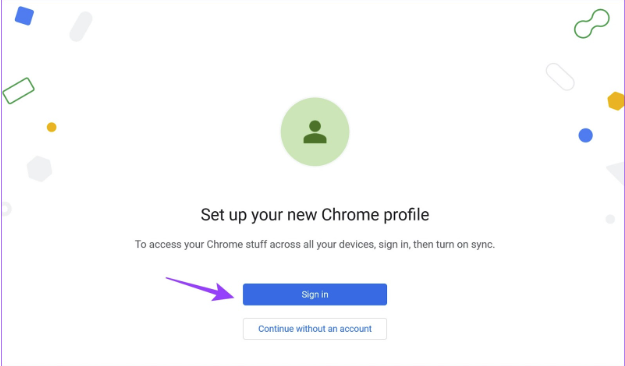
That’s it! However, if you find reCAPTCHA not working even on a new profile, move on to the next set of fixes.
5. Reset the Browser
Resetting a web browser restores all of its settings to their default values. Therefore, this might help solve the issue of reCAPTCHA not working, so here’s how you can reset your web browser. 1. Open Chrome and click on the three dots icon in the toolbar. Select Settings.
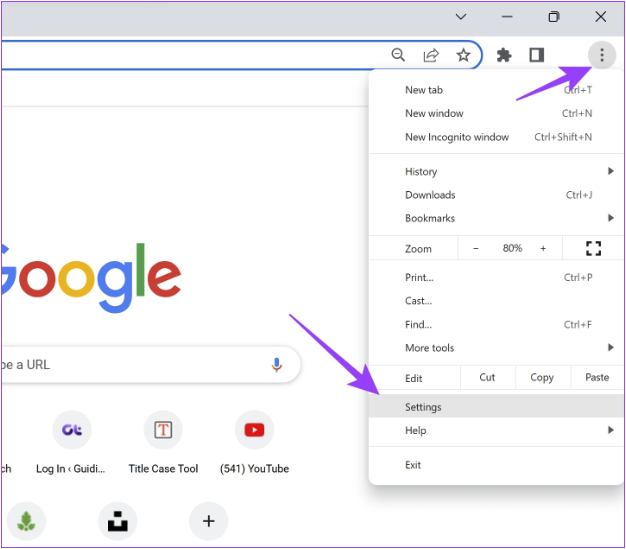
2. Select Reset and Clean up in the left pane. 3. Select Restore settings to their original defaults.
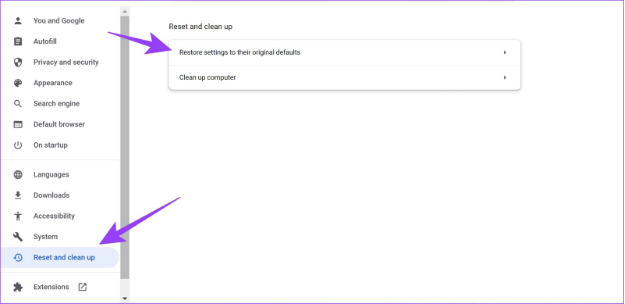
4. Now, click on Reset settings button to reset all settings on Chrome.
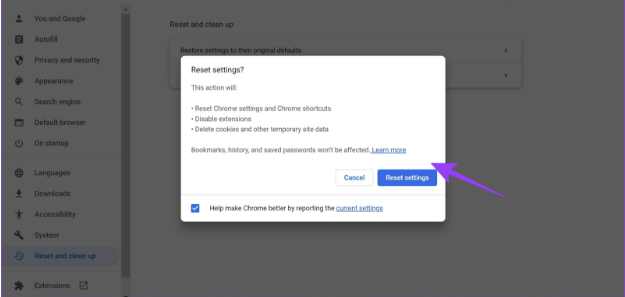
These were all the fixes that involved troubleshooting within your web browser. If none of the above helped, look at our next few methods that involve changing a few settings on your PC.
6. Check for Malware
Over the last few years, Windows Defender has done a great job in helping you protect your PC and has reduced the need for expensive anti-virus software. So, ensure to regularly scan and check if your PC has been infected by any malware using Windows Defender, although you will be automatically notified if there is any.
Having a malware-free PC is essential for all elements to work correctly, and it may affect your web browser and the reCAPTCHA service too. Here’s how you can scan for malware on Windows. 1. Open the Settings app and select the Privacy & security option.
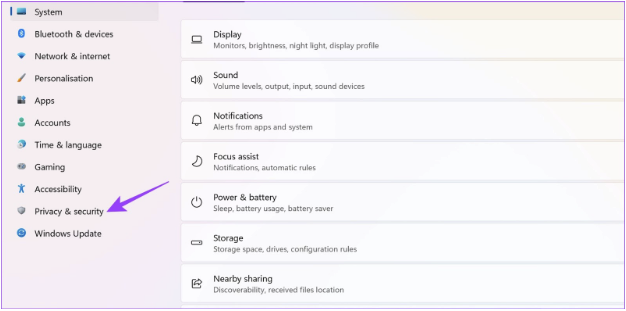 2. Select the Windows Security option.
2. Select the Windows Security option.
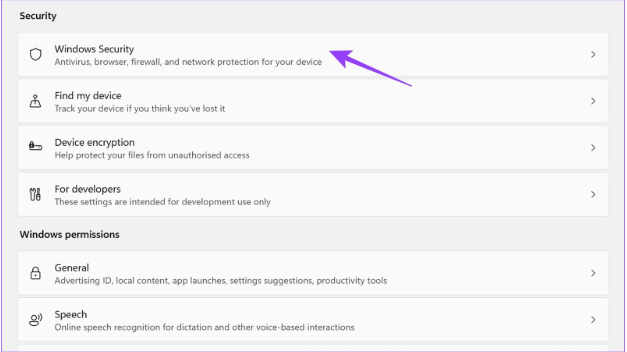 3. You will now have an overview of the security status of your PC. In case of any concern, you will find options to take action in this window. Therefore, you need to ensure that there are no threats and that they all show a status similar to the image below.
3. You will now have an overview of the security status of your PC. In case of any concern, you will find options to take action in this window. Therefore, you need to ensure that there are no threats and that they all show a status similar to the image below.
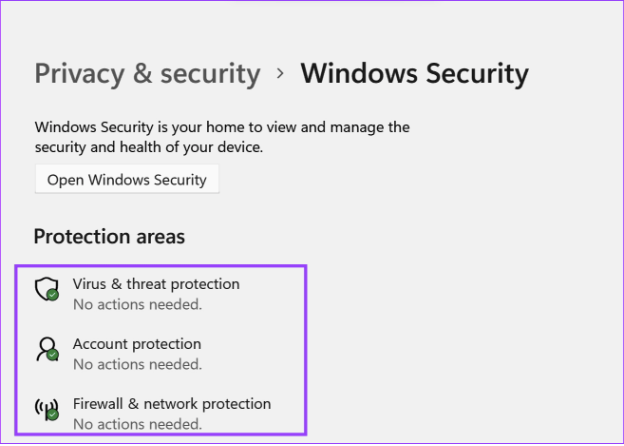
If this does not fix the issue, look into VPN connections.
7. Disable VPN or Proxy Server
Using a VPN helps you route your internet traffic via private and more secure servers. However, using a faulty one can do more harm than good. Therefore, if reCAPTCHA still isn’t working, you can try disabling the VPN or proxy server on your PC or web browser to check if it resolves it. Then, you can contact the VPN/Proxy service provider or try a different provider.
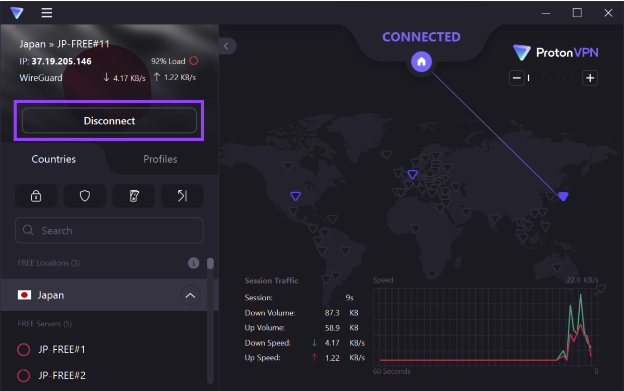
8. Change DNS to Google DNS
A DNS (Domain Name System) is used to change human-readable web addresses with a ‘.com’ extension to a machine-readable web address that involves just numbers that can be mapped to an IP address.
These DNS protocols are available via multiple providers. However, we suggest using the free-to-use Google DNS. Further, if there is any issue with your current DNS protocol, it might just be the cause of why reCAPTCHA isn’t working. Hence, you can try switching to Google DNS.
Here’s how: 1. Open the Control Panel and select the Network and Internet option.
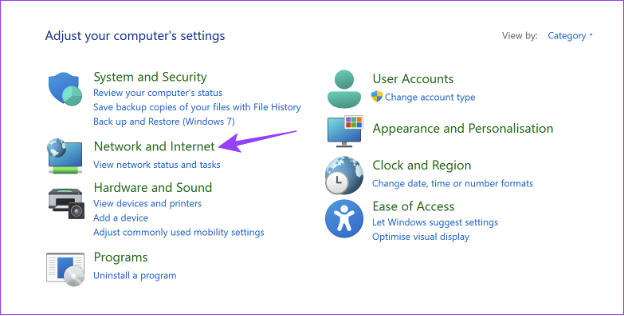 2. Next, open Network and Sharing Centre.
2. Next, open Network and Sharing Centre.
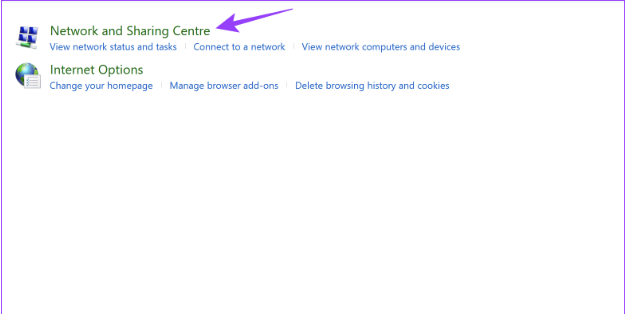 3. Select your network.
3. Select your network.
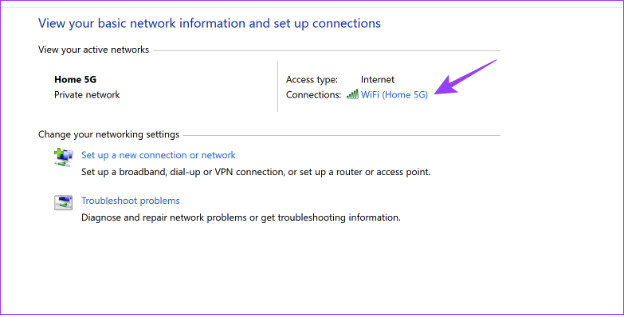 4. Next, select the Properties option.
4. Next, select the Properties option.
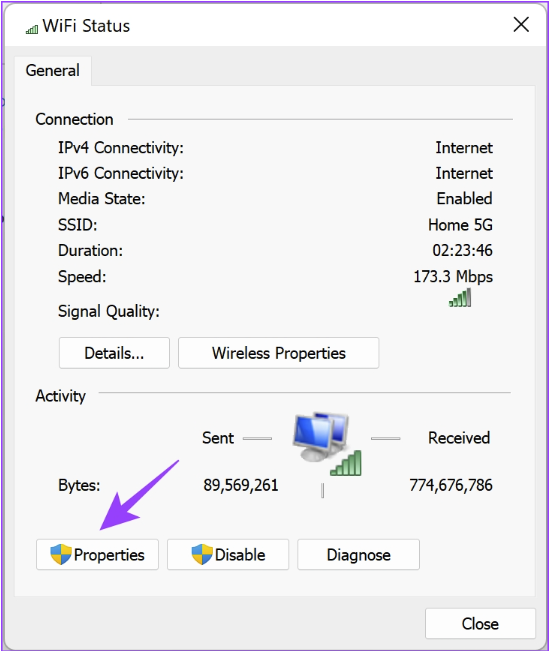 5. In the Wifi Properties window, check the Internet Protocol Version checkbox and click the Properties button.
5. In the Wifi Properties window, check the Internet Protocol Version checkbox and click the Properties button.
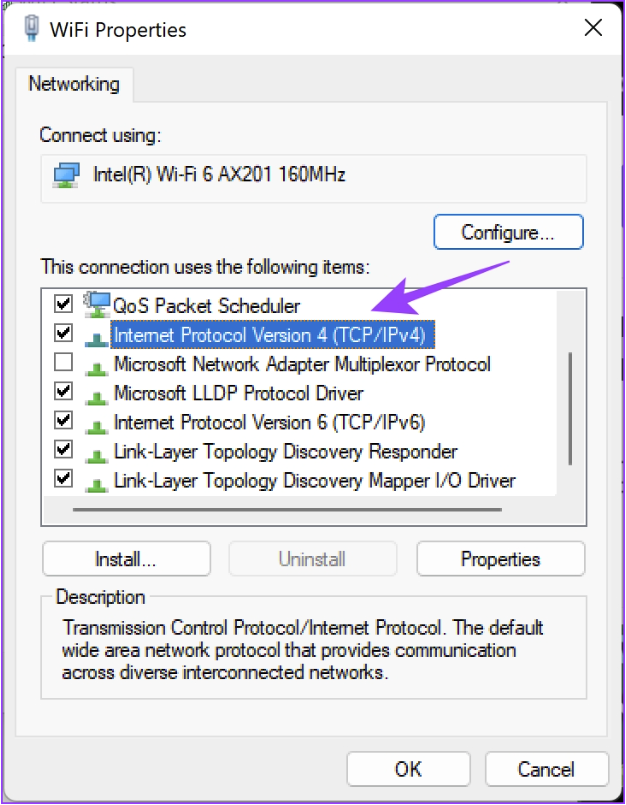
.png) 6. Check the Use the following DNS server addresses checkbox to manually enter the DNS server address.
6. Check the Use the following DNS server addresses checkbox to manually enter the DNS server address.
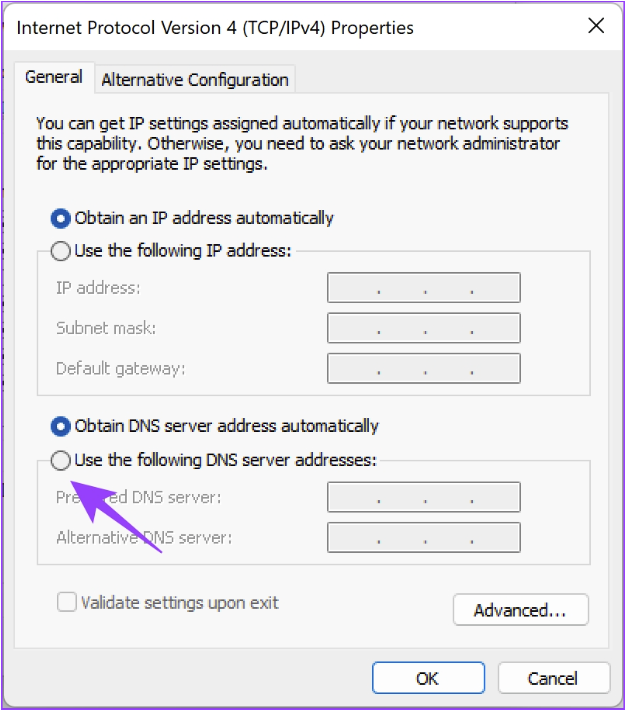 7. Next, in the Preferred DNS server field, enter the address 8.8.8.8, and in the Alternative DNS server field, enter 8.8.4.4. These are the addresses for the Google DNS server.
7. Next, in the Preferred DNS server field, enter the address 8.8.8.8, and in the Alternative DNS server field, enter 8.8.4.4. These are the addresses for the Google DNS server.
.png) 8. Lastly, click the OK button to apply the changes.
You can now check if using a different DNS fixes the issue. However, if this does not work, you can try resetting the IP address of your network.
8. Lastly, click the OK button to apply the changes.
You can now check if using a different DNS fixes the issue. However, if this does not work, you can try resetting the IP address of your network.
9. Reset IP Address
You can reset your IP address if reCAPTCHA is not working in Chrome or Firefox. Also, if your IP address is found suspicious, a reset might help.
Here’s how to do it. 1. First, find the Command Prompt on your PC in the start menu. Right-click and ‘Run as Administrator.’
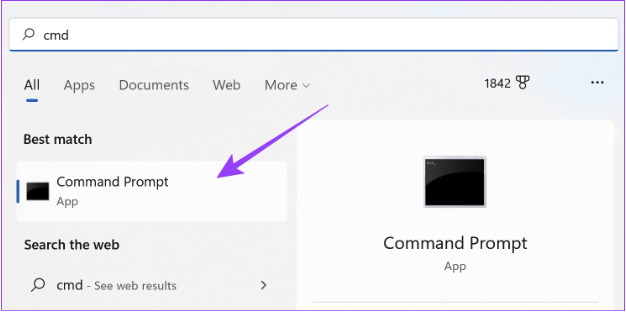 2. Once you open Command Prompt, type these commands individually, and hit enter. Once you execute the first command, move to the second one, and so on.
2. Once you open Command Prompt, type these commands individually, and hit enter. Once you execute the first command, move to the second one, and so on.
netsh winsock reset
netsh int ip reset
ipconfig /release
ipconfig /renew
3. After executing all these commands, restart your PC for the changes to take effect.
And this is how you reset the IP address on your PC. If this does not work, you can try restarting your Wi-Fi Router.
10. Restart the Router
‘Have you tried turning it off and on again?’ is the classic attempt to fix any problem on modern machines. In this case, you need to restart your Wi-Fi router instead because we’re sure you would have tried restarting your web browser or PC.
This refreshes your internet connection. Once done, you can check if reCAPTCHA is loading again on your browser.
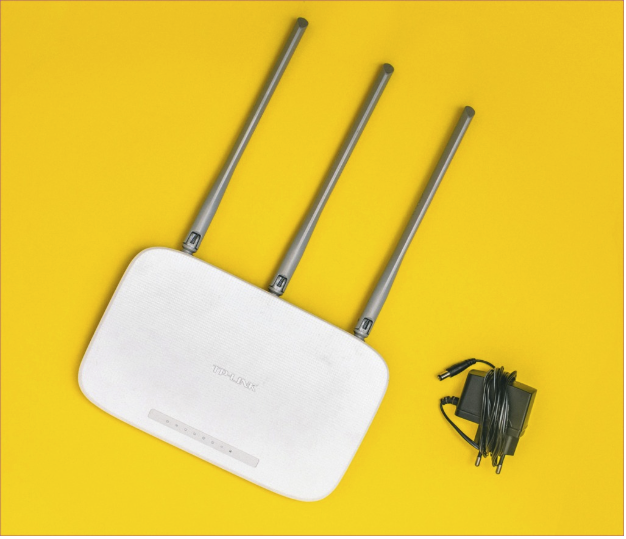
And these are all the fixes we can suggest to fix reCAPTCHA not working in Chrome or any of your web browsers. However, if you have any more questions, look at our FAQ section below. These are all the suggested solutions for resolving the issue of reCAPTCHA not working in Chrome or any other web browser. If you have any additional questions, please consult our FAQ section.
FAQs on Web Browser reCAPTCHA
Is reCAPTCHA secure? Yes, reCAPTCHA is highly secure and enhances online safety for users.
How does reCAPTCHA differ from Captcha? Captcha requires solving a visual puzzle, while reCAPTCHA only requires checking a box.
Is reCAPTCHA v3 an improvement over reCAPTCHA v2? Yes, reCAPTCHA v3 is an improvement over v2 as it is less disruptive for users.
This covers everything you need to know and do when you encounter the issue of reCAPTCHA not working in Chrome or any other browser. We hope this article helped resolve the issue. It can be incredibly frustrating when reCAPTCHA fails, especially when you’re a human trying to prove it but unable to. A problem of the modern age!
Have questions? We’re here to help! Contact Support